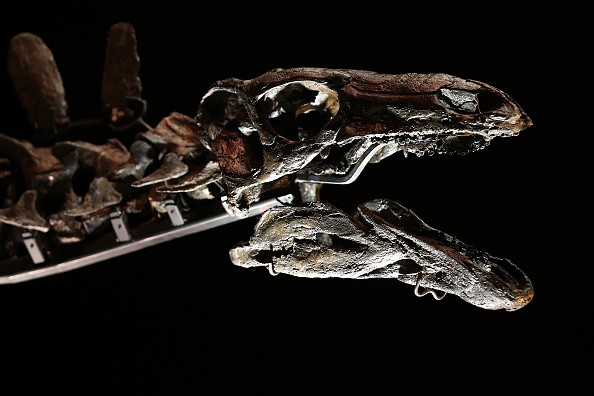New Dinosaur Specie Found, Named in Shandong, China
| Charissa Echavez | | Jan 02, 2016 06:37 AM EST |
(Photo : Getty Image) A team of paleontologists have discovered a unique bow-shaped hip bone from a new specie of dinosaur, whose fossil was found in Shandong Province in China.
A new specie of dinosaur has been found and named in Shandong Province, China. Paleontologists coined a name for the animal in the genus Leptoceratops, after its exceptional hip bone.
Part of the Ischioceratops zhuchengensis' skeleton was discovered at the Kugou Quarry, China. A number of other fossils have been excavated from this same site including ceratopsids. The new fossil material is believed to date to the late Cretaceous period (72 to 66 million years ago), which is the last dinosaur era.
Like Us on Facebook
Leptoceratops are small and herbivorous in nature. They used their four legs for locomotion, but are believed to also have the ability to stand and walk using their two hind legs alone. Usually, they have a body length of two meters and are distinguished by their sturdy jaws with big teeth, without horns and very small frills.
The ischium of the newly discovered specie is unlike any other dinosaurs. It progressively flares until its middle part forms an obturator process and the shaft of the recurve bow seem like the shaft. It's ovoid-shaped fenestra permeate the obturator process, and the distal part of the shaft resembles an expansion similar to that of an axehead.
Its scientific name Ischioceratops zhuchengensis was derived from its distinct ischium horn-face and the city - Zhucheng - where it was excavated.
The fossil was found by a team of researchers from the Institute of Vertebrate Palaeontology and Palaeoanthropology in Beijing, the Chicago Field Museum and the Zhucheng Dinosaur Museum in Zhucheng, China. Other than the I. zhuchengensis, 10 other new dinosaur were reportedly found. The findings of the study has been published in the PLOS ONE journal.
TagsShandong province, Leptoceratops, Ischioceratops zhuchengensis, Fossil fuels
©2015 Chinatopix All rights reserved. Do not reproduce without permission
EDITOR'S PICKS
-

Did the Trump administration just announce plans for a trade war with ‘hostile’ China and Russia?
-

US Senate passes Taiwan travel bill slammed by China
-

As Yan Sihong’s family grieves, here are other Chinese students who went missing abroad. Some have never been found
-

Beijing blasts Western critics who ‘smear China’ with the term sharp power
-

China Envoy Seeks to Defuse Tensions With U.S. as a Trade War Brews
-

Singapore's Deputy PM Provides Bitcoin Vote of Confidence Amid China's Blanket Bans
-

China warns investors over risks in overseas virtual currency trading
-

Chinese government most trustworthy: survey
-

Kashima Antlers On Course For Back-To-Back Titles
MOST POPULAR
LATEST NEWS
Zhou Yongkang: China's Former Security Chief Sentenced to Life in Prison

China's former Chief of the Ministry of Public Security, Zhou Yongkang, has been given a life sentence after he was found guilty of abusing his office, bribery and deliberately ... Full Article
TRENDING STORY

China Pork Prices Expected to Stabilize As The Supplies Recover

Elephone P9000 Smartphone is now on Sale on Amazon India

There's a Big Chance Cliffhangers Won't Still Be Resolved When Grey's Anatomy Season 13 Returns

Supreme Court Ruled on Samsung vs Apple Dispute for Patent Infringement

Microsoft Surface Pro 5 Rumors and Release Date: What is the Latest?













